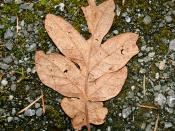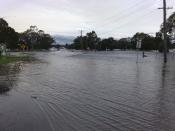Condamine river fresh water report
The water at the Condamine river and at browns plans site was of good quality, in the visual description of the areas. But when it came down to the physical and chemical qualities, many ideas of its quality were changed. Each site was found to have similar characteristics and also had very different characteristics through the testing of the water at each location.
Each site visited, there was minimal animal activity seen around the areas. At Browns Falls no animals were present or visible. This may have been because it was situated within a canopy. Craikes Road was the only area with any animals situated around the area; these included domestic farm animals e.g. cows and horses. The school site also had no visible animal present.
Plants on the other hand were in great population. Tussle grass was found at all of the three sites and would also be located between the sites also.
Reeds were also at each site, with minimal variations in grasses.
Each site contain a large variety of macro invertebrates in their water, they vary from very sensitive to very tolerant invertebrates. Brows Falls had the most different invertebrates, caddis fly larva being the most common of them all. The sensitivity of browns falls was moderate due to the variation of invertebrates. Other invertebrates found at Browns Falls were stonefly nymph, riffle beetle larva, both being very sensitive to water pollution, water scorpion, whirligig beetle larva, both tolerant, and the non-bitting midge larva. Riffle beetle adult was the most common invertebrate with 10 of the 16 macro invertebrates found were riffle beetles. Other invertebrates found were diving beetle adult, water boatman, round worm, which are all very tolerant invertebrates, caddis fly larva, and stonefly nymph, whish are very sensitive macro invertebrates.


